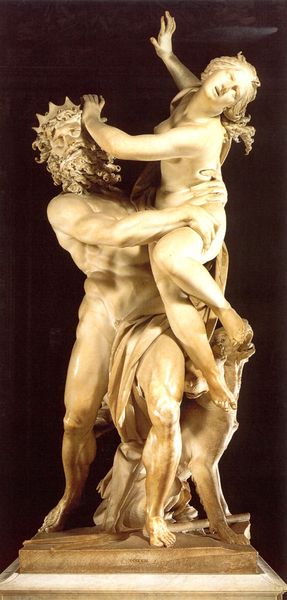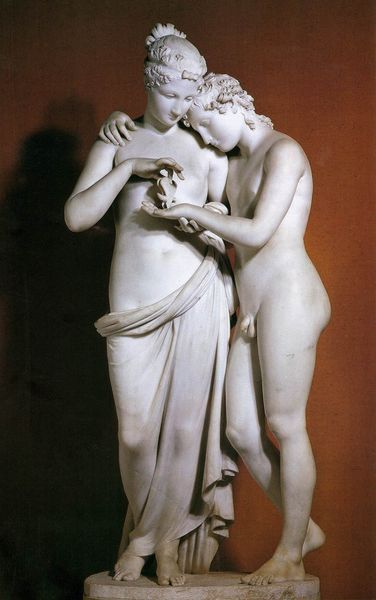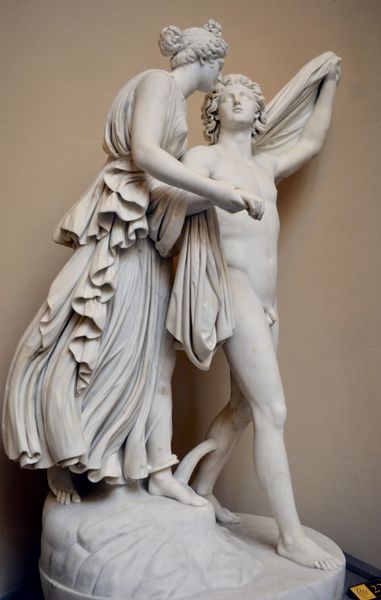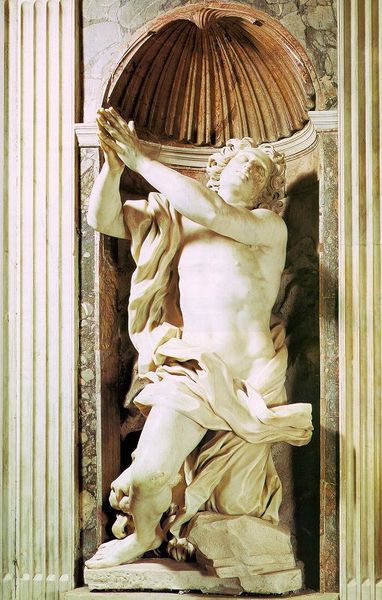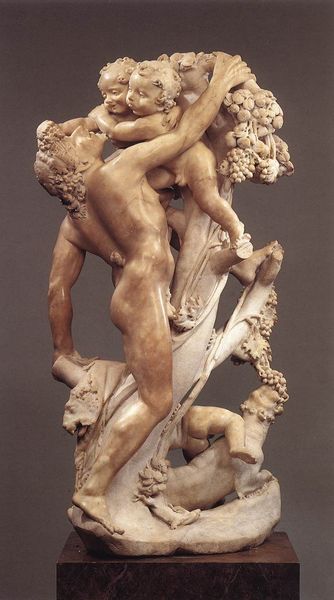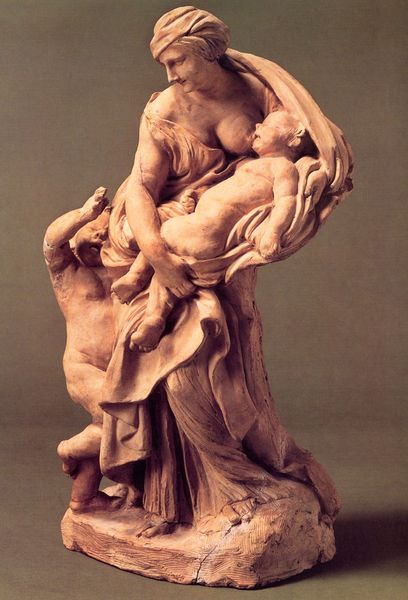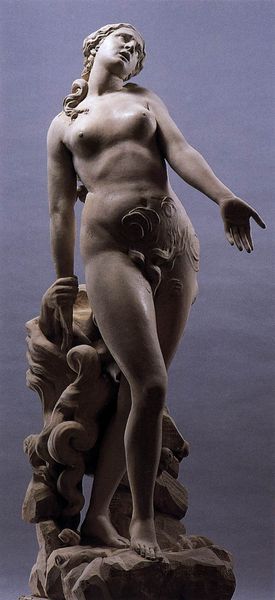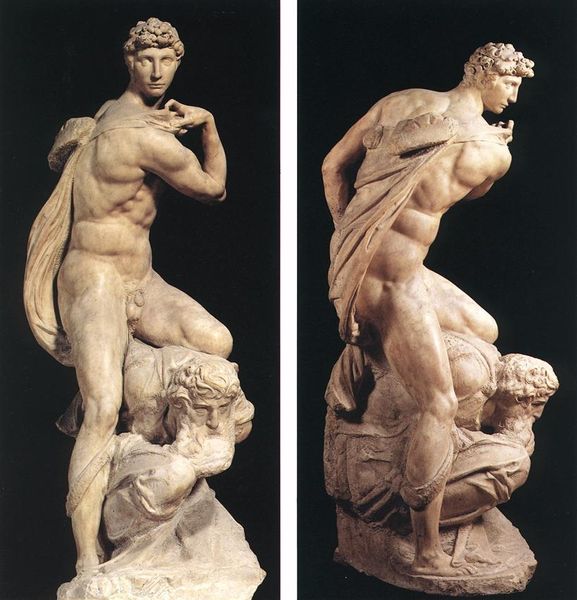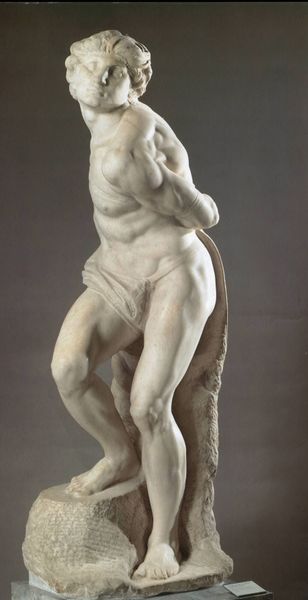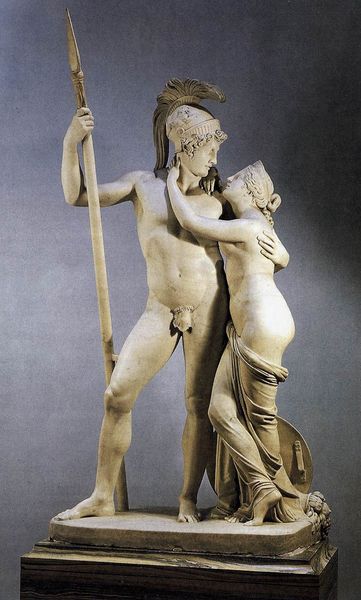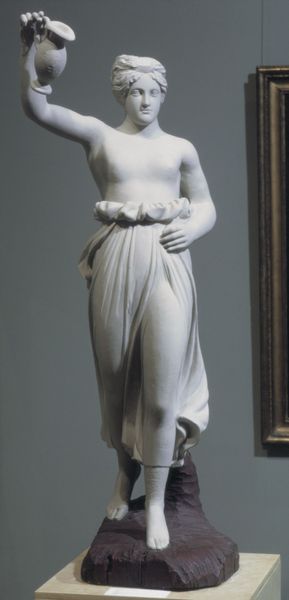
carving, sculpture, marble
statue
carving
baroque
sculpture
figuration
roman-mythology
sculpture
men
mythology
history-painting
marble
nude
Copyright: Public domain
Editor: Here we have Bernini's *Apollo and Daphne*, a marble sculpture from 1625. The way Daphne is caught mid-transformation is just breathtaking. What do you make of this piece, particularly in light of today's conversations around bodily autonomy? Curator: That’s a powerful entry point. Bernini masterfully captures the moment of metamorphosis, but it’s essential to consider the underlying narrative, right? The sculpture depicts Daphne's escape from Apollo's unwanted advances through her transformation into a laurel tree. Doesn't it evoke a sense of forced adaptation, of sacrificing agency in the face of patriarchal pursuit? Editor: Absolutely. You can see the terror in her face, even as she becomes a tree. It really makes you think about the limited options women have often faced throughout history when confronted with male aggression. Curator: And how the act of turning into something other than human becomes, ironically, an act of self-preservation, however desperate. What do you think about Apollo's depiction, and the values it may be mirroring about gender and power in Baroque Rome? Editor: Well, he's portrayed as this beautiful, almost entitled figure. I see how that reflects the societal acceptance of male dominance back then. Today, that image is jarring, making the piece a potent commentary on historical power dynamics. Curator: Precisely. Bernini's sculpture, beyond its technical brilliance, provides a visual text that invites us to critically examine not only classical myths, but also the enduring issues of consent, power, and the lengths to which individuals—particularly women—have been compelled to go to protect themselves. This lens is more relevant than ever. Editor: Thinking about it that way completely shifts my perspective. It's no longer just a beautiful sculpture, but a stark reminder of ongoing struggles for autonomy and respect. Curator: Art constantly converses with the present. Bringing that perspective to it transforms it into something dynamic and alive, something that can, hopefully, activate critical thinking.
Comments
No comments
Be the first to comment and join the conversation on the ultimate creative platform.
